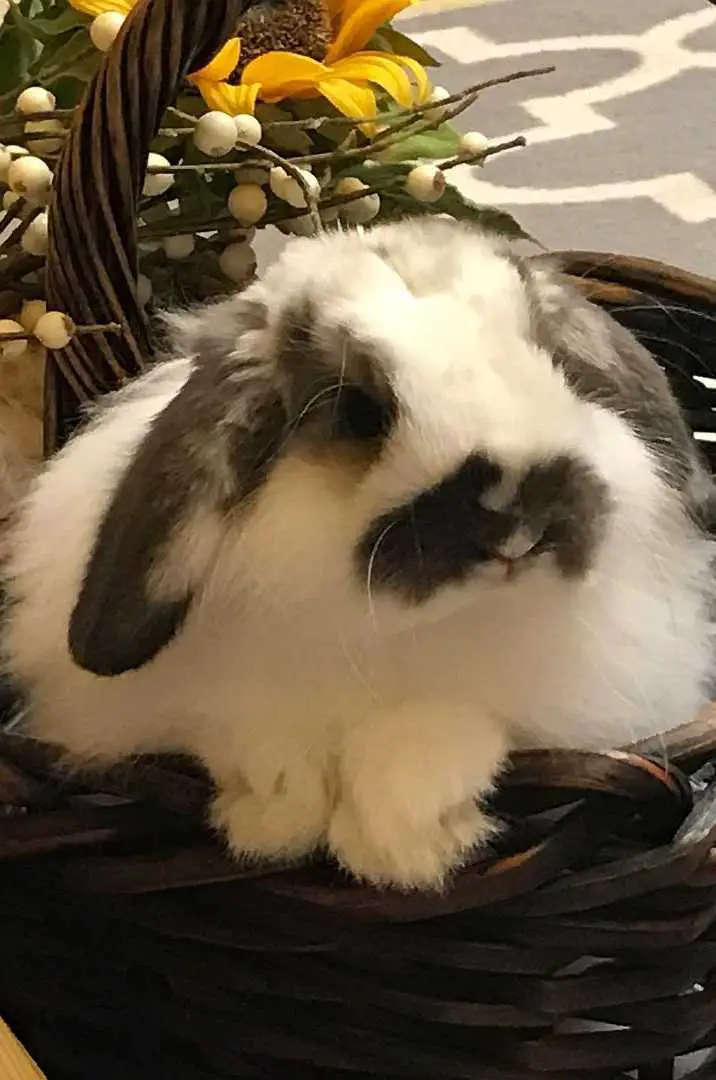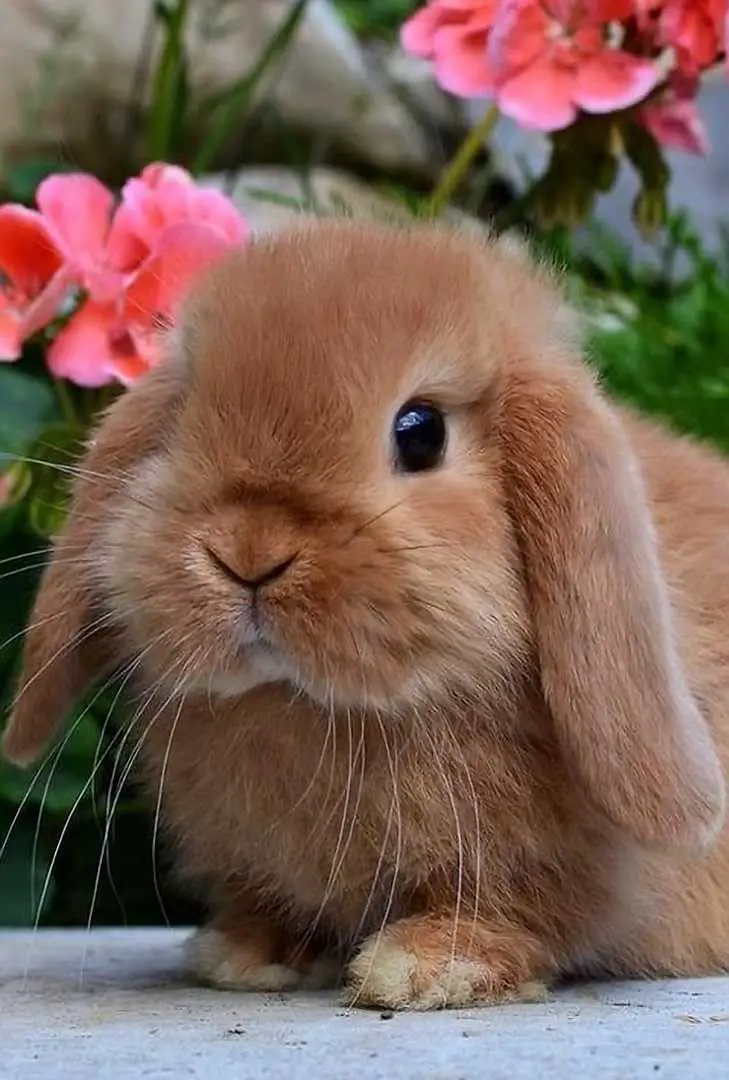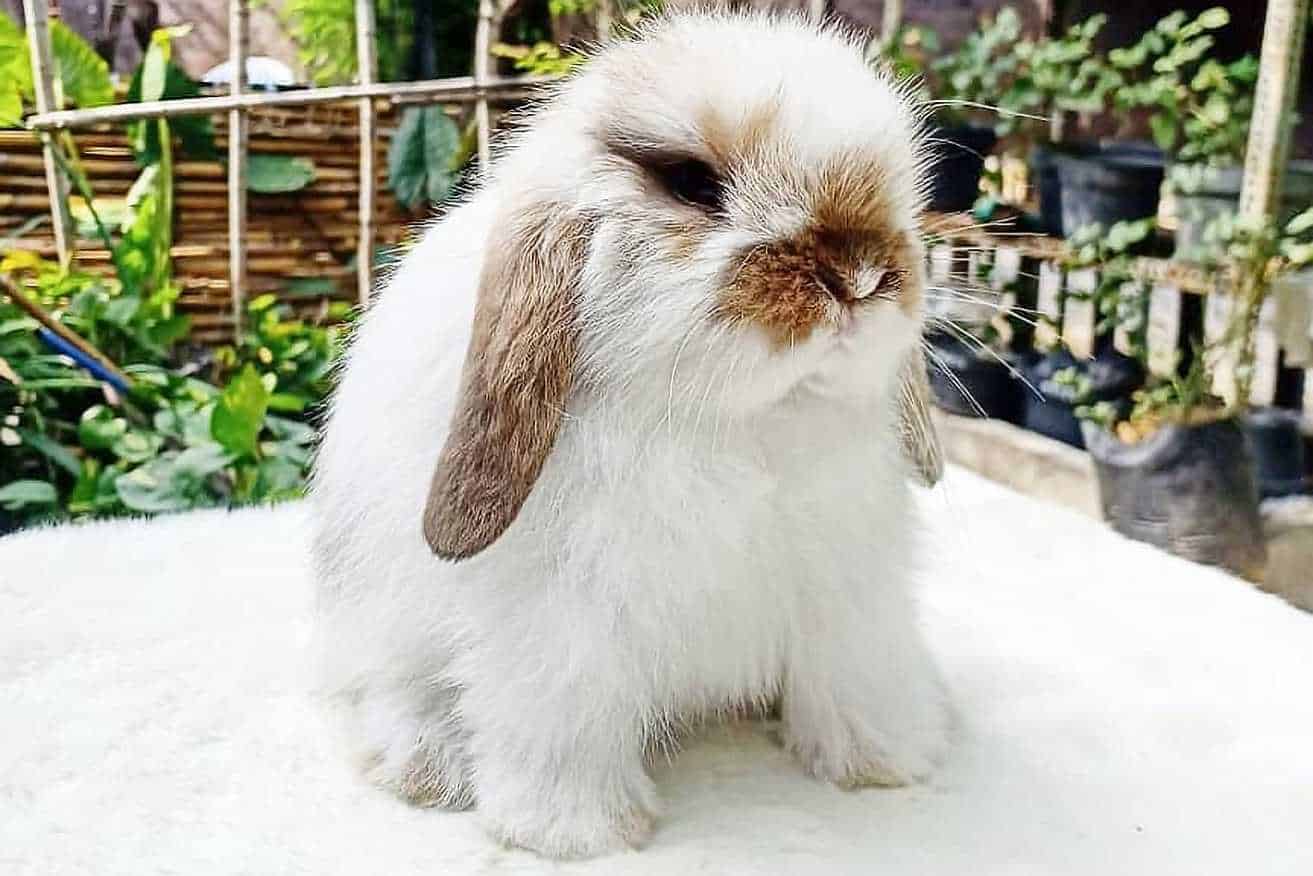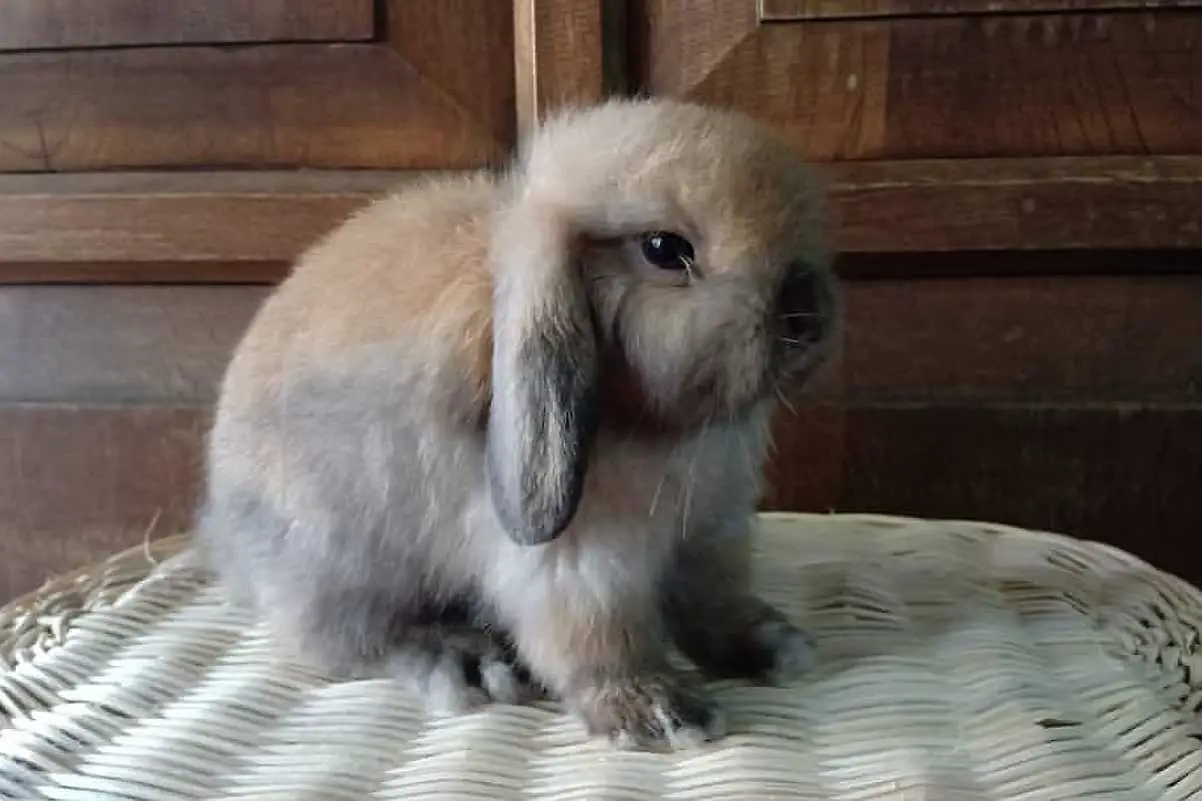Are you looking for an adorable bunny that’s also low-maintenance? Look no further because the American Fuzzy Lop Rabbit is the best one for you.
This energetic and friendly rabbit is perfect for first-time owners or families with children. Here’s a complete guide to help you understand the characteristics and care for these cute bunnies.
An Overview of the American Fuzzy Lop
| Species | Oryctolagus cunilicus |
| Family | Leporidae |
| Size | Dwarf / small |
| Weight | 3.5 – 4 pounds |
| Body Shape | compact |
| Life Span | Five to eight years |
| Colors | Chinchilla, agouti, lynx, opal, chestnut |
| Care and Maintenance Level | easy |
| Best Suited For | Families with children, indoors, couples, singles |
| Diet | Hay, pellets, fresh grass |
| Temperature | All climates |
| Cage Set-Up | Feeding bowl, water bottle, litter box |
| Minimum Cage Size | 6 feet by 2 feet x 2 feet |
| Comparable Breeds | French Angora and Holland Lop |
History and Background
You can never narrate the history of the American Fuzzy Lop without mentioning the Holland Lop Rabbit. The story of these two breeds is forever intertwined.
Many years ago, the Holland Lop only had solid colors, so breeders wanted to introduce a broken color pattern into the gene pool.
To achieve this feat, they mixed Holland Lops with English Spots. However, they failed to maintain Holland’s rollback fur despite achieving a broken pattern.
They bred French Angoras famous for their fluffy rollback coats with Holland Lops to resolve this dilemma. The result is a Holland Lop gene pool that includes a wool gene.
Eventually, breeders found Hollands with rich, luscious coats in litters. They sold these tiny, wooly-coated, and lop-eared bunnies to rabbit enthusiasts.
One of the lucky ones who recognized the potential of the adorable bunnies was Patty-Green Karl and Gary Fellers from the US East Coast. Ms.
Karl discovered the recessive qualities of the fuzzy gene, so she realized that breeding two Holland Lops could produce one in four bunnies having the famous fluffy wool.
Patty, along with Kim Landry, Margaret Millers, and Gary Fellers, pioneered the development of these wooly bunnies, which they named the American Fuzzy Lop. She presented them to the American Rabbit Breeders Association or ARBA after four years in the making.
In 1985, she introduced them to the ARBA convention in Houston, Texas, in the hopes of having the new breed recognized. However, the breed did not meet the ARBA uniformity standards.
In 1988, the association created a revised standard, so the American Fuzzy Lop was finally recognized as a legitimate rabbit breed.
Breed Standard and Appearance
The American Fuzzy Lop, also known as AFL or Fuzzy, is a small breed with a muscular, compact body. It weighs between 1.4 to 1.8 kilograms and looks almost the same as the Holland Lop except its fluffy wool.
This fuzzy bunny has firm, well-rounded hindquarters and a broad chest. Unlike other rabbit breeds whose ears stand erect, the AFL’s ears lop to the side of their cute faces.
Their muzzles, just like a cat’s, are flat and short. Its rollback fur is longer than the Holland Lop. Textile makers spin their exceptionally soft and fluffy hair to create wool.
Colors
The American Fuzzy Lop comes in different colors and distinct color markings :
| Color | Description |
| Agouti | Lynx, opal, squirrel, and chestnut combined with white |
| Pointed white | Pure white body with chocolate, lilac, blue, and black markings on their nose, around the eyes, and ears. |
| Solid White | Comes in ruby-eyed white and blue-eyed white. |
Personality and Temperament
These rabbits are energetic and playful and love to keep busy and run around. Their curious nature requires a solid enclosure to prevent them from roaming away from their home.
They are also sweet, pleasant, and friendly, making them ideal companions for families with kids, young couples, singles, and even seniors.
These adorable, fuzzy bunnies are also low-maintenance and do not require much grooming. They’ll happily thrive as long as you provide their basic needs of food, water, and plenty of tender, loving attention.
American Fuzzy Lops love to spend time indoors and keep the family company. They’d enjoy playtime and a lot of toys.
They can quickly get used to different kinds of pets and people as long as they are socialized early on. They can even be trained to come for food when called or respond to their names.
However, just like any prey animal, they will instinctively protect themselves when faced with threats to their safety. They get easily afraid by sudden movements or loud noises, making them afraid and withdrawn.
Providing another fuzzy bunny companion to your pet may prolong their life. Animals such as rabbits tend to live longer when they have furry friends to play with.
It would be best for their physical and mental well-being to provide ample space where two (or more) of them can rest and play comfortably.
Health Issues
The American Fuzzy Lop is a relatively healthy rabbit with minor health issues. They are expected to live for up to eight years. However, they can still get some of the following ailments:
Wool Block
Like all fluffy-haired rabbits, the AFL is prone to Wool Block. Rabbits sometimes ingest hair and develop furballs when they lick their coat to groom themselves.
However, unlike cats, bunnies can’t regurgitate these clumped hair, so there’s a chance that the furball will build up in their stomach, causing a blockage. If not detected early, Wool Block can cause blockage, leading to severe illness or death.
Having a stomach full of hair can trick your rabbit into feeling it is full, so they usually would stop eating. If this behavior continues, it might succumb to malnutrition or even starvation.
Common treatments for Wool Block are papaya tablets. These supplements contain enzymes that can break down the hairball blockage.
Flystrike
A bunny with a wound, wet fur, or dirty bottom is a magnet for flies. When these insects land on their skin and lay eggs, the rabbit can develop a condition called Flystrike.
It happens when the eggs hatch, turning into maggots that gnaw their way into the pet’s skin. It can occur rapidly and can become deadly.
The best way to battle this condition is to regularly check your rabbit’s hygiene. Flystrike isn’t always evident in furry-haired rabbits, such as the AFL, so it would help if you inspect their coats from time to time.
Tooth Overgrowth
Bunnies should never have overgrown teeth since they can grow into their face and jaws. This condition is excruciating and can lead to poor appetite.
Provide them hay daily since the rough texture of the dried grass will help taper their teeth to prevent them from overgrowing. If their teeth become too long, it would be best to bring them to the veterinarian. Only a professional can trim the rabbit’s teeth without harming them.
Caring for the American Fuzzy Lop Rabbit
Diet
A rabbit’s diet should be 70% hay, while the rest can be high-quality, formulated pellets. The recommended amount of pellets should be 25 grams per kilogram of the bunny’s body weight.
You may add some leafy greens and small amounts of fruits but remember to give them sparingly. Too much sugar can harm your rabbit and lead to obesity and other illnesses.
Grooming
You need to brush and check your Fuzzy’s hair during the shedding season. It would be best to inspect their tail area regularly to check for tangling and matting. Tangled fur affects their appearance and can cause them pain when trying to untangle it.
Bunnies are naturally clean animals. They groom themselves regularly except for when they are ill. If you notice that they have stopped grooming or doing their usual activities, bring them to the vet immediately.
Always check their anal area for Flystrike. If you catch it early, there’s a big chance the bunny can survive the ordeal. Check also for fleas and ticks. If you notice a few, apply a safe repellent, especially when they go out to play.
Remember not to bathe your rabbit. Bathing can give your furry friend stress that can lead to depression or, worse, heart problems.
Nails, Ears, and Teeth Maintenance
Please ensure that their teeth do not overgrow. Giving them a diet of timothy hay can prevent this condition. Chew toys can also trim their teeth naturally.
Rabbits who are allowed to play outside will usually have naturally-trimmed nails. Running and hopping on various surfaces can wear their nails down.
However, indoor bunnies may not have the chance to trim their nails naturally, so owners must bring them to a professional groomer. Ask your veterinarian to teach you if you want to cut their nails by yourself. Ensure that you don’t trim past the white part of the nail.
While rabbits can groom their ears, it’s still advisable to check them regularly for mites, build-up, or infection. Do the inspection more often if your Fuzzy lives outdoors.
Preparing the Rabbit’s Home
Since the American Fuzzy Lop is an active breed, you need to provide a large cage or hatch. A shelter that measures about 6 x 2 x 2 feet would be enough. Place a food bowl, a water bottle, and a litter box inside the cage.
You can also place some toys to keep your bunny busy, especially when they have no companion.
Remember to make bedding out of timothy hay to keep them warm during cold weather. Hay used as bedding is better than paper or cardboard since it’s safe for the rabbit to ingest them.
The AFL can thrive indoors or outdoors. Ensure to secure the perimeter fence and raise the cage above ground to protect them from all kinds of predators. There should be no gaps in the bottom or sides of the hutch to keep them safe from danger.
Home Maintenance
Before cleaning the hutch, remove the rabbit from the cage and transfer them to a clean shelter. Take out the litter box and dispose of the droppings in the proper trash bin.
Hose down and brush the bottom and sides of the cage. Don’t forget to clean their toys, water bottle, and food bowls. Then, replace the bedding and dry their accessories before bringing your bunny.
Training the American Fuzzy Lop Rabbit
Potty Training
This friendly and sociable breed is pretty easy to potty train. It would if the training starts as early as possible. When the rabbit does not poop inside the litter box, bring its droppings on top of the litter shavings. Repeating this will allow the bunny to recognize the habit and the odor.
Since this breed has long and luscious fur, you need to pay attention to its bottom’s cleanliness after pooping. If it fails to clean itself for some reason, clean its anal area with baby wipes.
Don’t worry if your bunny produces soft stools at night and eats them when morning comes. This “poop,” called cecotropes, aids the rabbit’s digestion. They’re also filled with nutrients that can help your rabbit become healthy.
Crate Training
A rabbit needs to get used to sleeping and hanging out in its cage or hutch to keep it safe from harm. During your bunny’s first few days with you, you need to lock the cage, so it will learn that it’s supposed to stay inside.
This training is also helpful when transporting your pet to the vet or another place.
Socialization
You can help your bunny get comfortable with other people if you allow them to socialize while they are younger. Bring them out of their cage for a few minutes every day to play with them.
They also love being cuddled on your lap. If you have younger children at home, teach them to gently stroke the bunny’s hair and never play roughly with them.
Summary
The American Fuzzy Lop Rabbit is an adorable breed that will make a great addition to anyone’s home or family. It’s a low-maintenance breed that loves to socialize with people. Their vibrant energy and sweet disposition make them worthwhile companions and loyal pets.




